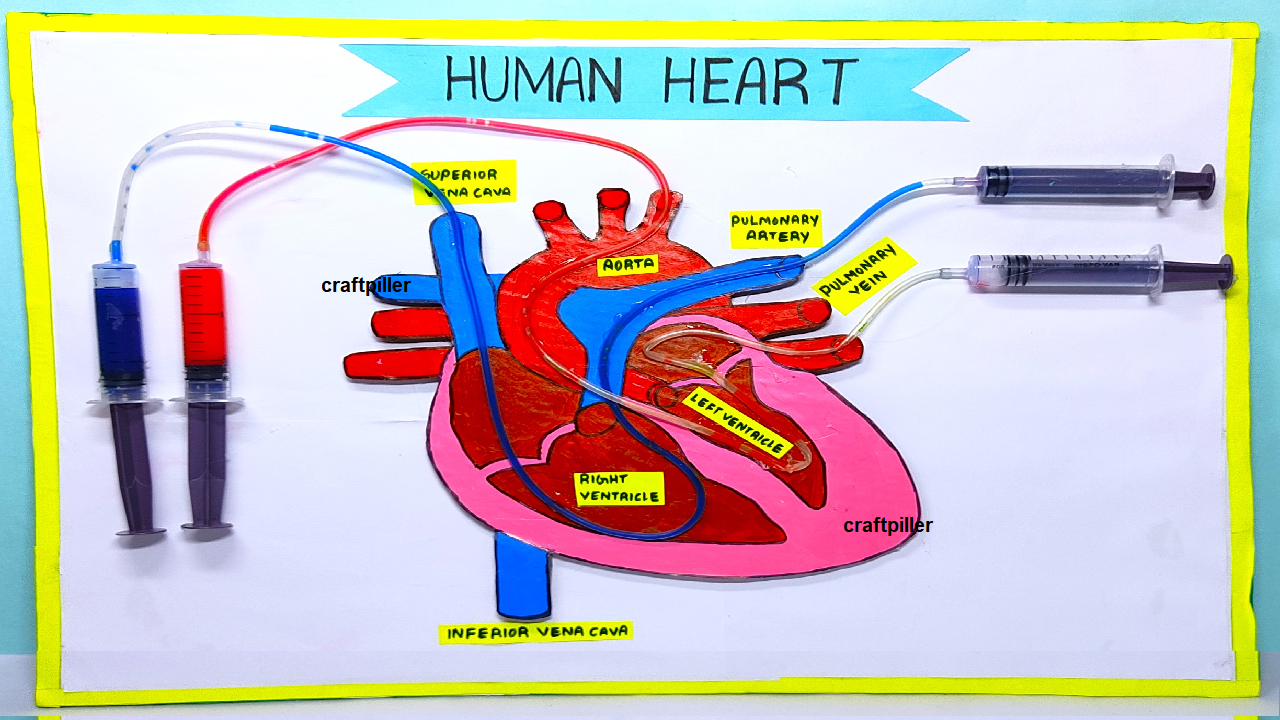A heart working model using syringes demonstrates how the heart pumps blood through the circulatory system. The model mimics the contraction and relaxation of the heart chambers, showing the process of blood flow, similar to how the human heart works in pumping oxygenated and deoxygenated blood.

Key Components of the Model:
- Syringes: Two syringes represent the heart’s two main chambers—one for the left side and one for the right side.
- Plastic Tubing: Flexible tubing connects the syringes to simulate the blood vessels, carrying blood to and from the heart.
- Valves: Small plastic or rubber pieces are used to create valves in the model, mimicking the heart valves that prevent backflow of blood.
- Red and Blue Dye: Food coloring is used in the syringes to distinguish between oxygenated (red) and deoxygenated (blue) blood.
- Containers: A small container holds the “blood” (water mixed with dye) for circulation.
How It Works(heart working model ):
- Set Up the Syringes: Attach the syringes to the plastic tubing, ensuring one syringe is designated for deoxygenated blood (blue) and the other for oxygenated blood (red). The syringes represent the left and right atria/ventricles of the heart.
- Simulate the Heartbeat: By pushing and pulling the plunger of the syringes, you simulate the heart’s pumping action. The right syringe pumps deoxygenated blood into the lungs for oxygenation, and the left syringe pumps oxygenated blood to the body.
- Blood Flow: The liquid flows through the tubing to show the pathway of blood—deoxygenated blood from the body to the right atrium, to the lungs, then oxygenated blood returning to the left atrium, and finally to the rest of the body.
- Valve Function: The valves prevent the backflow of blood, ensuring it moves in one direction, just like in the human heart.
Applications and Learning:
- Real-Life Relevance: This model provides a clear visual of how the heart circulates blood, mimicking the actual pumping action.
- Educational Value: It helps explain the concepts of circulation, heart chambers, valves, and the function of blood in the human body.
This hands-on model is a great way to understand the heart’s mechanics and circulatory system, making it perfect for science projects or classroom demonstrations.

